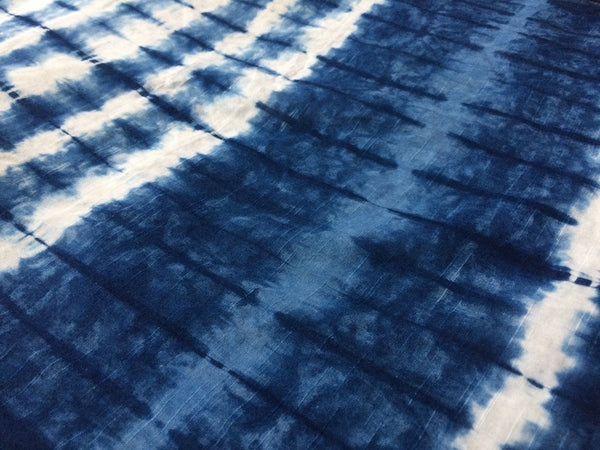high quality dyeing with japanese indigo
High Quality Dyeing with Japanese Indigo
Japanese indigo, known as “ai” (藍) in Japan, is a traditional dyeing material that has been cherished for centuries. Its deep blue hue is not only visually striking but also carries a rich cultural history that contributes to Japan’s artistic legacy. The resurgence of interest in natural dyes has led to a renewed appreciation for Japanese indigo, particularly in the realms of fashion, textile arts, and sustainable practices. This article explores the process of high-quality dyeing with Japanese indigo, its historical significance, and its future in contemporary craftsmanship.
The Historical Context of Japanese Indigo
The use of indigo dye dates back to ancient times. Throughout Japanese history, this dye was used predominantly by the working class, particularly in the regions of Tokushima and Okayama, where the climate is ideal for growing indigo plants. These practitioners developed intricate dyeing techniques, which often involved a deep understanding of shibori (the Japanese art of tie-dye), to create beautiful patterns and textures. The dye itself is extracted from the leaves of the indigo plant, with a meticulous process that transforms the vibrant green leaves into the sought-after blue dye.
The significance of indigo in Japanese culture extends beyond aesthetics; it is tied to the essence of craftsmanship, sustainability, and the connection to nature. The traditional dyeing process involves fermenting the indigo leaves to produce a dye bath, a practice that underscores the importance of patience and respect for the materials used. It is said that the best indigo producers often refine their techniques over generations, passing down their knowledge and skills as a cultural heritage.
The Process of High-Quality Dyeing
High-quality dyeing with Japanese indigo involves several key steps to ensure that the final product not only showcases a rich blue color but also maintains the integrity and quality of the fabric
.1. Preparation of the Fabric The first step in the dyeing process is preparing the fabric. Cotton and hemp are popular materials for dyeing with indigo due to their ability to absorb the dye well. Fabrics must be thoroughly cleaned and pre-treated to remove any oils or impurities that could interfere with dye uptake.
high quality dyeing with japanese indigo

2. Creating the Dye Bath The next crucial step is preparing the dye bath. In traditional practices, indigo leaves are fermented in a carefully controlled environment to create a soupy mixture known as 'sukumo.' This process can take several weeks, and the resulting dye bath needs to be aerated to promote the right conditions for dyeing.
3. Dyeing Techniques Once the dye bath is ready, the actual dyeing begins. Various techniques can be employed to achieve different patterns and shades. For instance, shibori techniques involve folding, twisting, or binding the fabric before immersing it in the dye bath, resulting in exquisite patterns that are unique to each piece. Multiple dips in the dye bath can be done to deepen the color, and, strikingly, the fabric will appear green when first removed from the dye. It is only upon exposure to air that the familiar blue emerges.
4. Finishing Touches After achieving the desired color, the fabric must be rinsed and then finished through processes that can include washing, drying, and sometimes further treatment with natural mordants to enhance the color’s permanence and vibrancy.
The Future of Japanese Indigo Dyeing
As the global market shifts toward sustainable practices, the demand for natural dyes like Japanese indigo is on the rise. Designers and artisans are increasingly leaning towards eco-friendly alternatives to synthetic dyes, contributing to a renaissance of indigo dyeing practices. Workshops and educational programs are emerging, inviting people to learn about the craft and its environmental benefits.
Moreover, collaborations between tradition and innovation have begun to bloom. Modern applications of indigo dyeing include contemporary fashion, home decor, and textile artistry, making it appealing to a broader audience. As consumers grow more conscious of the impact of their choices, high-quality Japanese indigo dyeing symbolizes not only a connection to nature but also supports small-scale farmers and artisans who practice these age-old techniques.
In conclusion, high-quality dyeing with Japanese indigo is a beautiful fusion of tradition, skill, and sustainability. As this craft continues to evolve, it honors the past while embracing the potential for a more sustainable future, ensuring that the deep blue hues of indigo will remain a vibrant part of our cultural tapestry for generations to come.
-
The Timeless Art of Denim Indigo Dye
NewsJul.01,2025
-
The Rise of Sulfur Dyed Denim
NewsJul.01,2025
-
The Rich Revival of the Best Indigo Dye
NewsJul.01,2025
-
The Enduring Strength of Sulphur Black
NewsJul.01,2025
-
The Ancient Art of Chinese Indigo Dye
NewsJul.01,2025
-
Industry Power of Indigo
NewsJul.01,2025
-
Black Sulfur is Leading the Next Wave
NewsJul.01,2025

Sulphur Black
1.Name: sulphur black; Sulfur Black; Sulphur Black 1;
2.Structure formula:
3.Molecule formula: C6H4N2O5
4.CAS No.: 1326-82-5
5.HS code: 32041911
6.Product specification:Appearance:black phosphorus flakes; black liquid

Bromo Indigo; Vat Bromo-Indigo; C.I.Vat Blue 5
1.Name: Bromo indigo; Vat bromo-indigo; C.I.Vat blue 5;
2.Structure formula:
3.Molecule formula: C16H6Br4N2O2
4.CAS No.: 2475-31-2
5.HS code: 3204151000 6.Major usage and instruction: Be mainly used to dye cotton fabrics.

Indigo Blue Vat Blue
1.Name: indigo blue,vat blue 1,
2.Structure formula:
3.Molecule formula: C16H10N2O2
4.. CAS No.: 482-89-3
5.Molecule weight: 262.62
6.HS code: 3204151000
7.Major usage and instruction: Be mainly used to dye cotton fabrics.

